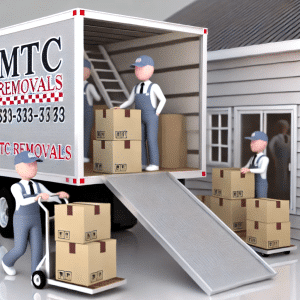
What is the importance of moving company?
The importance of a moving company lies in the multitude of benefits they offer: Peace of Mind: Knowing professionals are handling your move reduces anxiety.
How to Pack The Kitchen Efficiently ? Pack each pot and lid separately, using the nesting method to save space by placing smaller items within larger ones. For added protection, cushion your pots and pans by wrapping them with rolled-up tea towels or stuffing packing paper into the gaps around them. Always use a separate box for pots, pans, other containers, and larger utensils to ensure everything stays organised and secure during the move.
Always place heavier items at the base of the box, with lighter items stacked towards the top.
Learning how to pack kitchen items effectively is crucial for an stress-free move. Although packing a kitchen can be a daunting task, by employing thoughtful planning and organisation, you can accomplish it efficiently. In this guide, we’ll provide you with step-by-step instructions to help you navigate the process of packing your kitchen with ease. Packing a kitchen can be a daunting task, but with a little planning and organisation, it can be done efficiently:
Remember to take your time when packing your kitchen, and don’t be afraid to ask for help if you need it. With a little planning and organization, you can pack your kitchen efficiently and make your move a little smoother.Write an article about how packing a kitchen can be a daunting task, but with the right steps and tips, it doesn’t have to be complicated. This article will provide detailed instructions on how to pack a kitchen efficiently, from making a plan and gathering supplies to packing fragile items and labeling boxes. Additionally, this article will offer helpful advice on using space effectively, what to include in your “first-day” box, and when to ask for help. With this guide at hand, anyone can make their move smoother and easier!
A: Before you start packing, create a plan of attack. Make a list of all the items in your kitchen and decide which items you will pack first and which ones you will need until the move.
A: You will need a variety of packing supplies, including boxes in various sizes, packing paper, bubble wrap, packing tape, and labels.
A: Start by packing fragile items such as glasses, dishes, and stemware. Wrap each item in packing paper or bubble wrap, and place them in boxes with dividers. Label the boxes as “fragile” so that the movers know to handle them with care.
A: Once you have packed your fragile items, move on to non-fragile items such as pots, pans, and utensils. Use smaller boxes for heavier items, and larger boxes for lighter items.
A: When packing your boxes, try to use space as efficiently as possible. Fill any empty spaces with packing paper or bubble wrap to prevent items from shifting during transit.
A: Label each box with its contents and destination room. This will make it easier for the movers to know where to place each box in your new home.
A: Pack a box with essential items such as paper plates, cups, utensils, and snacks. This will be the first box you unpack when you arrive at your new home, and it will make your first day in your new kitchen a little easier.
A: Don’t be afraid to ask for help if you need it. Reach out to friends or family members, or consider hiring professional packers. Taking your time and getting help can make the process smoother and less stressful.Packing a kitchen can be a daunting task as it involves numerous fragile and bulky items that need to be handled with extreme care. However, with the right approach, packing a kitchen can be less complicated and more efficient. In this article, we will discuss the pros and cons of different packing methods and key factors to consider when packing a kitchen.
There are several methods to pack a kitchen. Each method has its pros and cons, and it is crucial to choose the one that works best for you. Here are the most popular methods:
Box-by-box packing involves packing one box at a time, which allows for better organization and easier unpacking. This method is ideal for people who have enough time to pack and move their kitchen. However, it could be time-consuming, and it may require more packing supplies.
Room-by-room packing involves packing everything in one room before moving to the next room. It is a faster method than box-by-box packing, and it requires fewer packing supplies. However, it could lead to disorganization and confusion during unpacking.
The hybrid method involves packing some items box-by-box and other items room-by-room. It is a flexible method that allows you to pack your kitchen based on your preferences and needs. However, it could be challenging to keep track of what goes where.
Before packing your kitchen, it is essential to plan your move and create a packing checklist. The checklist should include all the items in your kitchen, the packing supplies you need, and the order in which you will pack your items.
You will need a variety of packing supplies, including boxes in various sizes, packing paper, bubble wrap, packing tape, and labels. It is crucial to use high-quality supplies to protect your fragile items during transit.
Fragile items such as glasses, dishes, and stemware should be wrapped in packing paper or bubble wrap. Use boxes with dividers to keep them from shifting during transit. Label the boxes as “fragile” to ensure they are handled with care.
Pots, pans, and utensils are non-fragile items that should be packed in smaller boxes for heavier items and larger boxes for lighter items.
When packing your boxes, use space as efficiently as possible. Fill any empty spaces with packing paper or bubble wrap to prevent items from shifting during transit.
Label each box with its contents and the destination room. This will make it easier for the movers to know where to place each box in your new home.
Pack a box with essential items such as paper plates, cups, utensils, and snacks for your first day in your new home. This will make your first day in your new kitchen a little easier.
In conclusion, packing a kitchen efficiently requires planning, proper supplies, and careful handling of fragile items. Choosing the right packing method and considering key factors such as space efficiency and labelling will make your move smoother and less stressful. Don’t hesitate to reach out to friends or family members or consider hiring professional packers to help you. With the right approach and enough help, packing a kitchen can be an easy and enjoyable task.If you’re looking for reliable and professional assistance in packing your kitchen, MTC Removals is a great option to consider. They provide exceptional packing services that can help you save time and ensure the safety of your belongings.
When it comes to packing a kitchen, MTC London Removals Company recommends using a box-by-box method. This will allow for greater organization and make unpacking easier in your new home. Additionally, they suggest packing items in small to medium-sized boxes to prevent them from becoming too heavy to carry.
MTC London Removals also puts emphasis on the importance of using high-quality packing materials to protect your fragile items. Bubble wrap, packing paper, and sturdy boxes with dividers are all essential supplies to ensure the safe transport of your kitchen items.
When packing your kitchen, it’s crucial to label each box with its contents and the destination room. MTC Removals also recommends using a color-coding system to identify boxes that contain fragile items. This will help movers handle your belongings with care and prevent any damage during transit.
Another useful tip from MTC London Removals Company is to prepare a first-day box with essentials such as paper plates, cups, and utensils. This will make your first day in your new kitchen much easier, without having to worry about unpacking everything right away.
For non-fragile items such as pots, pans, and utensils, it’s best to pack them in smaller boxes for heavier items and larger boxes for lighter items. As you pack, consider space efficiency by filling any empty spaces with packing paper or bubble wrap to prevent movement. Additionally, labelling each box with its contents and the destination room will make it easier for movers to know where to place each box in your new home.
For a smoother transition, consider preparing a first-day box with essential items such as paper plates, cups, utensils, and snacks. This will help you settle into your new home without immediately needing to unpack everything in your kitchen.
Choosing the right packing method is crucial when transporting a kitchen, and we recommend using a box-by-box approach. This will allow for greater organization and ease during unpacking. Furthermore, packing small to medium-sized boxes will prevent them from becoming too heavy to carry.
When it comes to fragile items, MTC Removals recommends using a color-coding system to identify these boxes. This will help movers handle them with extra care and prevent any damage during transit. Using high-quality packing materials, such as bubble wrap and packing paper, will also protect your belongings during transport.
In summary, packing a kitchen efficiently requires proper planning, supplies, and careful handling of fragile items. By following these tips and enlisting the help of reliable professionals like MTC London Removals Company, you can make your move smoother and less stressful.Packing a kitchen for a move can seem like a daunting task, but with careful planning and the right supplies, it can be a more manageable and even enjoyable process. Here are some factors to consider when packing your kitchen for a move.
Packing your kitchen for a move can be one of the most challenging tasks when relocating. However, with the correct preparation and using appropriate supplies, it can become more manageable. In this article, we will discuss factors to consider when packing your kitchen, such as the packaging methods, labeling tips, and necessary tools. By adopting these measures, you can guarantee the safety of your fragile items while in transit and ease the unpacking process in your new abode.
Mobile: 079 0824 7249
Office: 020 3811 8380
E-mail: info@mtcremovals.com
| WEEK DAYS: | 07:00 – 22:00 |
| SATURDAY: | 08:00 – 18:00 |
| SUNDAY: | 08:00 – 18:00 |
Mobile: 079 0824 7249
Office: 020 3811 8380
E-mail: info@mtcremovals.com
| WEEK DAYS: | 07:00 – 22:00 |
| SATURDAY: | 08:00 – 18:00 |
| SUNDAY: | 08:00 – 18:00 |

The importance of a moving company lies in the multitude of benefits they offer: Peace of Mind: Knowing professionals are handling your move reduces anxiety.

A Comprehensive Guide to Choosing Your Ideal Place to Live Living in the perfect location is crucial for a happy life. Between financial decisions and

Move Easily at Low Cost | Moving Service from Experienced Professionals Removal and Storage | Packing Service | Furniture Disposal | Free On-Site Survey. Friendly Service.

